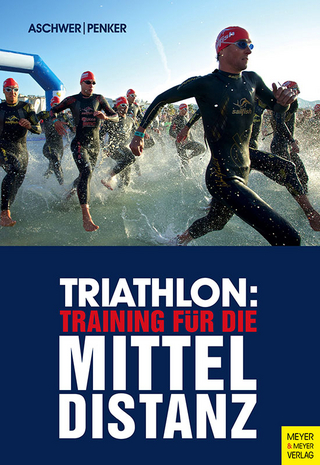
Injury-Free Running
Lotus Publishing Limited (Verlag)
978-1-913088-16-3 (ISBN)
- Titel z.Zt. nicht lieferbar
- Portofrei ab CHF 40
- Auch auf Rechnung
- Artikel merken
Each time your foot hits the ground while running, an impact force averaging three times your weight travels through your body at more than 200 miles per hour, causing your bones to vibrate and tendons to stretch. When you consider the average runner strikes the ground more than 10,000 times per hour, this translates into a remarkable amount of force that needs to be absorbed, and explains why nearly 50% of recreational runners are injured each year. The purpose of this book is to show you that impact forces are not necessarily harmful. By modifying your running form and doing specific exercises to improve tendon resiliency, not only can you effectively absorb these forces, but you can also store and return a significant percentage of them in the form of elastic recoil. Besides reducing your risk of injury, efficiently storing and returning energy can allow you to run faster with less effort.
With more than 200 illustrations and 300 references, this book reviews how to:
*Perform an at-home gait analysis to make specific changes in your running form that can reduce impact forces and improve performance.
*Decrease your risk of injury by identifying problems with strength, flexibility, and/or neuromotor coordination using specific functional tests.
*Incorporate new exercises to enhance the storage and return of energy in your tendons.
*Select the running shoe that is right for you.
*Treat 25 of the most common running-related injuries with the most up-to-date, scientifically justified treatment protocols available.
Since graduating from Western States Chiropractic College in 1982, Tom Michaud has published numerous book chapters and dozens of journal articles on subjects ranging from the treatment of tibial stress fractures in runners to the conservative management of shoulder injuries in baseball players. In addition to lecturing on clinical biomechanics internationally, Tom Michaud has served on the editorial review boards for Chiropractic Sports Medicine and the Australasian Journal of Podiatric Medicine. He is also the author of Foot Orthoses and Other Forms of Conservative Foot Care (Williams & Wilkins, 1997), as well as Human Locomotion: The Conservative Management of Gait-Related Disorders, self-published.
Foreword
Preface
References
1: A Review of Anatomy and Three-Dimensional Motion
2: The Biomechanics of Walking and Running
What is Perfect Running Form?
Hybrid Running: The Ideal Running Form
Ground Running: The Ideal Gait for Injury Prevention
Transitioning Between Different Running Styles
Stance Phase
Swing Phase
Graphic Summary of Muscle Activity During the Gait Cycle
References
3: Risk Factors Predisposing to Running Injuries
Height of the Medial Longitudinal Arch
Limb Length Discrepancy (LLD)
Flexibility
Strength Training
Neuromotor Coordination
References
4: How to Develop the Ideal Running Form for Endurance, Sprinting, and/or Injury Prevention
The Making of a Great Endurance Runner
Factors Responsible for Successful Sprinting
The Best Drills and Exercises for Improved Performance
Modify Your Running Form to Avoid Injury
Putting It All Together: Performing an At-Home Gait Analysis
References
5: Selecting the Ideal Running Shoe
The First Evidence of Shoe Use
Athletic Shoes from the Early 1900s
Running Shoes from the 1970s Through 2010
The Midsole
Running Shoes from 2010 to Current Minimalist Running Shoes
Maximalist Running Shoes
New Categories: Fast, Soft, or Stable
Selecting the Running Shoe That's Right for You
References
6: Treatment Protocols
Achilles Tendinitis
Sesamoiditis
Metatarsalgia and Metatarsal Stress Fractures
Interdigital Neuritis/Neuroma
Bunions
Hallux Limitus and Rigidus
Plantar Fasciitis
Heel Spurs and Calcaneal Stress Fractures
Baxter's Neuropathy
Tibialis Posterior Tendinitis
Ankle Sprains
Compartment Syndromes
Medial Tibial Stress Syndrome
Stress Fractures
Patellofemoral Pain Syndrome
Patellar Tendinopathy
Iliotibial Band Compression Syndrome
Hamstring Strains
Piriformis Syndrome
Greater Trochanteric Pain Syndrome
Adductor Strains
Osteitis Pubis
Low Back Disorders
References
Index
| Erscheinungsdatum | 15.01.2021 |
|---|---|
| Zusatzinfo | 250 |
| Verlagsort | Chichester |
| Sprache | englisch |
| Maße | 189 x 246 mm |
| Gewicht | 800 g |
| Themenwelt | Sachbuch/Ratgeber ► Sport ► Leichtathletik / Turnen |
| Sonstiges ► Geschenkbücher | |
| ISBN-10 | 1-913088-16-2 / 1913088162 |
| ISBN-13 | 978-1-913088-16-3 / 9781913088163 |
| Zustand | Neuware |
| Haben Sie eine Frage zum Produkt? |
aus dem Bereich


